Zing Rust Font is an essential design tool that brings authentic, hand-painted textures and a dynamic, energetic feel to your projects. It’s perfect for adding a touch of vintage character, bold statements, and unique personality to logos, headlines, and branding. Its versatility and unique aesthetic make it a go-to for designers seeking a distinctive, eye-catching option that stands out.
Feeling a bit lost when it comes to choosing fonts that truly capture your brand’s spirit? You’re not alone! Finding that perfect typeface can feel like searching for a needle in a haystack. So many options, and yet, none quite hit the mark. Especially when you want something with a bit of grit and genuine character. Maybe you’ve tried mimicking that popular distressed look, but it just ended up feeling… well, fake. It’s frustrating when your visual identity doesn’t quite convey the raw energy or authentic charm you envision. But don’t worry! We’re going to dive deep into the incredible world of the Zing Rust font. We’ll uncover exactly what makes it so special and how you can wield its power to elevate your designs. Get ready to transform your creative toolkit!
Unlocking the Power of Zing Rust Font: More Than Just Letters
The Zing Rust font isn’t just another typeface; it’s an experience. Imagine the satisfying scrape of a brush on a rough surface, the gritty undertones of weathered metal, or the bold, unapologetic stroke of a well-loved sign painter’s brush. That’s the essence of Zing Rust. It’s designed to deliver a visually rich, authentic, and undeniably cool aesthetic that’s hard to replicate.
At its core, Zing Rust is a display font. This means it truly shines in larger sizes, making it ideal for headlines, titles, logos, and any place where you want text to grab attention and make a strong impression. Its distinctive texture, closely recalling rusted metal or distressed printing, adds immediate depth and a tactile quality to your designs. Think of it as a shortcut to instant character and a vintage, industrial vibe.
But its appeal goes beyond just its textured look. Zing Rust carries an inherent energy. The slight imperfections and robust strokes convey a sense of resilience and raw beauty. This makes it a fantastic choice for brands that want to project a down-to-earth, authentic, or even rebellious personality. It’s a font that doesn’t shy away from being noticed.
Key Characteristics of Zing Rust Font
What makes Zing Rust stand out from the crowd? It’s a combination of its unique design elements that work together to create a powerful visual impact. Let’s break down its defining features:
- Authentic Texture: This is Zing Rust’s superpower. It features a highly realistic, rough, and weathered texture that mimics rusted metal, distressed paint, or worn-out printing processes. This isn’t a subtle effect; it’s bold and immediately noticeable.
- Hand-Painted Feel: The letters often exhibit variations in stroke width and edges, reminiscent of hand-painted lettering. This provides a human touch and a sense of craftsmanship that digital fonts often lack.
- Robust and Bold Strokes: Zing Rust typically features thick, substantial letterforms. This makes it highly legible at a distance and gives it a strong, impactful presence, crucial for headlines and logos.
- Dynamic and Energetic: The imperfections and the overall ruggedness of the font create a sense of movement and raw energy. It feels alive and is anything but sterile.
- Versatile Applications: Despite its strong character, Zing Rust can be surprisingly versatile. It works exceptionally well for vintage themes, industrial aesthetics, urban styles, adventurous branding, and anywhere authenticity and impact are key.
These characteristics combine to make Zing Rust a truly distinct tool in any designer’s arsenal. It’s not just about filling space with letters; it’s about adding a visual narrative directly through the typography.
Why Zing Rust Font is Your New Design Essential
In a sea of clean, minimalist sans-serifs and elegant scripts, a font like Zing Rust offers a refreshing contrast. Its raw, textured appeal can instantly elevate a project from ordinary to extraordinary. Here’s why it deserves a prime spot in your design toolkit:
- Unleash Unique Branding: For businesses aiming for an authentic, no-nonsense, or vintage-inspired brand identity, OMG Rust is a dream. It can help establish a memorable visual signature that resonates with customers seeking genuine character. Think craft breweries, artisanal workshops, or outdoor adventure companies.
- Craft Eye-Catching Headlines: Tired of bland headlines? Zing Rust injects immediate visual interest and personality. It can turn a simple announcement into an exciting declaration.
- Boost Logo Impact: A well-designed logo is crucial. Zing Rust’s bold texture and inherent grit can make a logo instantly recognizable and memorable, especially for brands that want to convey strength, durability, or a unique story.
- Add Character to Display Text: Beyond logos and headlines, any large-format text where you want to make a statement – like on posters, packaging, or website banners – can greatly benefit from Zing Rust’s distinctive style.
- Evoke Specific Moods and Eras: The font is a natural fit for retro, vintage, industrial, grunge, or urban-themed projects. It can transport your audience and immerse them in a specific atmosphere.
It’s about using typography not just for readability, but for its emotional and aesthetic impact. Zing Rust excels at this, providing a shortcut to a specific, hard-earned visual language.
Getting Started with Zing Rust Font: Practical Steps
Ready to harness the power of Zing Rust? It’s simpler than you think! Here’s a step-by-step guide to integrating this dynamic font into your design workflow:
Step 1: Sourcing and Installing Zing Rust
First, you need to acquire the font. Zing Rust, like many distinctive display fonts, is often available from various font marketplaces or independent designers. When searching, use terms like “distressed font,” “textured font,” “industrial font,” or “grunge font” alongside “Zing Rust.”
Look for reputable sources. Websites like Font Squirrel, MyFonts, or Creative Market are excellent places to find high-quality fonts, often with clear licensing information. Make sure you understand the license for commercial use if you plan to use it for clients or your business.
Once downloaded (usually in a .zip file), you’ll need to install it on your operating system.
- Windows: Right-click on the font file and select “Install.”
- macOS: Double-click the font file and click “Install Font” in the Font Book application.
- Linux: Copy the font file into your system’s font directory (e.g., `~/.fonts/` or `/usr/share/fonts/`).
After installation, restart your design software (like Adobe Photoshop, Illustrator, Figma, or Canva) for the font to appear in your font selection menu.
Step 2: Selecting the Right Project
Zing Rust isn’t an all-purpose font. It’s a statement font. Think about where its strengths can be best utilized:
- Logos: Especially for brands that want to convey ruggedness, authenticity, or a vintage industrial feel.
- Headlines & Titles: For websites, posters, brochures, book covers, or social media graphics where you need text to grab immediate attention.
- Packaging: To add a unique, tactile, and memorable element to product packaging.
- Event Promotion: For flyers or posters advertising events with a grungier, more adventurous, or retro vibe.
- T-shirt Designs: Its bold, textured style is perfect for apparel graphics.
Consider the overall mood and message of your project. Does Zing Rust enhance it, or does it conflict? If your brand is sleek, minimalist, and modern, Zing Rust might not be the best fit for your primary branding, but could be used for a specific campaign.
Step 3: Typography Design with Zing Rust
Here’s where the magic happens. Experimenting with Zing Rust is key to unlocking its full potential:
- Size Matters: This font comes alive at larger sizes. For body text, it’s generally too distracting and can be difficult to read. Stick to headlines, subheadings, logos, and other display text.
- Pairing: To balance Zing Rust’s strong personality, pair it with a simpler, cleaner font for supporting text. A classic sans-serif like Open Sans or Lato, or a legible serif like Merriweather, works well. This creates contrast and ensures readability.
- Color Palette: The texture of Zing Rust pairs beautifully with earthy tones, deep grays, blacks, and metallic hues. Consider how the font’s color interacts with its texture – lighter colors can sometimes highlight the distressed details more prominently.
- Layout and Spacing: Give Zing Rust enough breathing room. Its busy texture can feel cramped if letters are too close together. Adjust letter-spacing (kerning) and line-spacing (leading) to ensure clarity and visual harmony.
- Layering and Effects: While Zing Rust already has inherent texture, you can further enhance it. In design software, consider adding subtle shadows, gradients, or even using blend modes to make it pop. However, be careful not to overdo it, as the font’s natural character is often its strongest asset.
Step 4: Testing and Refinement
Before finalizing your design, always test Zing Rust in its intended context. View your design on different screens and in various sizes. Does it still read well? Does it convey the intended message and emotion?
For logos and branding, pay close attention to how it scales down. While it’s a display font, a good logo should at least be recognizable in smaller applications, though you might need a simplified version for very small uses. Ensure that the essential character of the font is maintained.
Comparing Zing Rust to Similar Font Styles
To truly appreciate Zing Rust, it helps to understand its place among other textured, distressed, and brush-style fonts. While they share a common goal of adding grit and character, subtle differences can impact their suitability for your project.
| Font Type | Key Characteristics | Typical Use Cases | Zing Rust vs. This |
|---|---|---|---|
| Distressed Sans-Serif (e.g., many grunge fonts) |
Uniformly roughened or eroded edges. Often a clean digital font with texture applied. | Grunge aesthetics, punk rock posters, rebellious branding. | Zing Rust often has a more varied, hand-painted texture and a stronger sense of individual letter character, not just a uniform digital distress. |
| Brush Script Fonts (natural brush) |
Mimics the fluidity and variation of a real brush stroke. Can be elegant or bold. | Calligraphy-inspired logos, wedding invitations, artistic branding. | Zing Rust is typically a sans-serif or block-style font, focusing on robust texture and bold form rather than flowing script. It’s more about raw impact than fluid artistry. |
| Stamp Fonts | Simulates ink bleed and imperfect impressions of a rubber stamp. | Retro, DIY, craft projects, quick-print aesthetics. | Zing Rust’s texture is often more akin to metal or weathered paint, offering a different tactile feel, usually bolder and more substantial than a typical stamp or ink bleed. |
| Handwritten Fonts (cleaner) |
Mimics a casual, everyday handwriting. Focuses on readability and simplicity. | Personal notes, friendly branding, informal websites. | Zing Rust is significantly more textured, bolder, and has a much stronger, rugged personality than typical clean handwritten fonts. |
Zing Rust carves out its niche by offering a superior level of realistic texture and a robust, energetic presence. It’s less about a subtle aesthetic and more about a bold, almost tangible declaration of character.
Real-World Applications of Zing Rust Font
Seeing Zing Rust in action can really spark inspiration. Here are a few hypothetical – or inspired by real trends – scenarios where this font shines:
- Craft Brewery Branding: Imagine a small brewery called “Iron Kettle Brews.” Zing Rust could be the perfect font for their logo. It evokes strong, hand-crafted beer made with traditional methods, perhaps even hinting at the metal kettles used in brewing. Paired with a simpler, clean font for their beer descriptions, it creates a complete, authentic brand identity. They might use it on tap handles, bottle labels, and their website.
- Motorcycle Apparel Company: For a brand selling custom motorcycle jackets and gear, “Rebel Steel Apparel” could use Zing Rust for its main logo and headlines. The font’s grit and raw texture directly communicate the spirit of freedom, rebellion, and durability associated with riding. It conveys toughness and a no-nonsense attitude.
- Urban Art Gallery or Street Art Festival: An event like the “Concrete Canvas Festival” would benefit from Zing Rust. The font’s urban, industrial feel mirrors the city landscape and the raw art being displayed. It’s bold, attention-grabbing, and speaks to the dynamism of street art. It could be used on posters, social media campaigns, and signage.
- Adventure Gear Store: A store specializing in rugged outdoor equipment, perhaps named “Summit & Grit,” could use Zing Rust for its storefront signage and website banners. The font’s textured, robust nature implies durability, resilience, and a connection to the wild, challenging environments their gear is designed for.
- Rock Band Album Art: For a band leaning into a classic rock or hard rock sound, Zing Rust is a natural fit for album titles or band logos on the cover art. It instantly communicates power, energy, and a no-frills authenticity that matches the music.
These examples illustrate how Zing Rust’s inherent qualities can be leveraged to communicate specific brand values and create strong thematic connections with the target audience. It’s about choosing a font that doesn’t just look good, but feels right for the message.
Tips for Maximizing Zing Rust Font’s Impact
To truly make Zing Rust a star in your designs, consider these advanced tips:
- Embrace Negative Space: Because Zing Rust has a high visual weight, don’t overcrowd it. Generous spacing around the text allows it to breathe and prevents the texture from becoming overwhelming.
- Contrast is Key: As mentioned, pair it with a clean, legible font. This contrast is crucial for readability. The simple font provides a calm counterpoint that allows Zing Rust to exert its full impact without tiring the reader.
- Subtle Animation: For digital projects, you can experiment with subtle animations. Imagine the texture appearing to “weather” or “rust” into place over a few seconds, or letters gently displacing to reveal a metallic sheen. Such effects can greatly amplify the font’s inherent character.
- Consider Contextual Alternates: Some advanced font families offer “contextual alternates” – slightly different glyphs that appear based on letter combinations to improve flow. If Zing Rust has these, explore them to subtly enhance the hand-crafted feel.
- High-Resolution Textures: When using Zing Rust for print or large digital displays, ensure your design exports at a high resolution. This preserves the intricate details of the font’s texture, preventing pixelation and ensuring a crisp, impactful appearance. For vector-based work in programs like Adobe Illustrator, it’s often best to keep text editable for as long as possible before applying any raster effects.
- Don’t Force It: The biggest mistake is trying to fit a font where it doesn’t belong. If your brand is about gentle care, pastel colors, and soft textures, Zing Rust will likely clash. It’s a powerful tool, but its power comes from being used appropriately.
By thoughtfully applying these principles, you can ensure that Zing Rust doesn’t just appear in your design, but actively contributes to its overall success and message.
Frequently Asked Questions About Zing Rust Font
What kind of projects is Zing Rust font best suited for?
Zing Rust is ideal for projects needing a strong, textured, and authentic feel. This includes logos, headlines, packaging, posters, and apparel for brands with a vintage, industrial, rugged, urban, or adventurous aesthetic.
Is Zing Rust font easy to read?
As a display font, Zing Rust is most readable in large sizes for headlines and titles. It is generally not recommended for long blocks of body text due to its intricate texture and bold nature, which can make sustained reading difficult.
Can I use Zing Rust font for commercial projects?
Yes, you can, but it depends on the license provided by the font’s creator or distributor. Always check the licensing agreement before using any font for commercial purposes to ensure you are compliant. Reputable font marketplaces clearly state usage rights.
How can I make Zing Rust font stand out even more?
You can enhance Zing Rust’s impact by pairing it with a clean, contrasting font for supporting text, using a complementary color palette that highlights its texture, giving it ample negative space, and subtly incorporating textural effects or animations in digital contexts
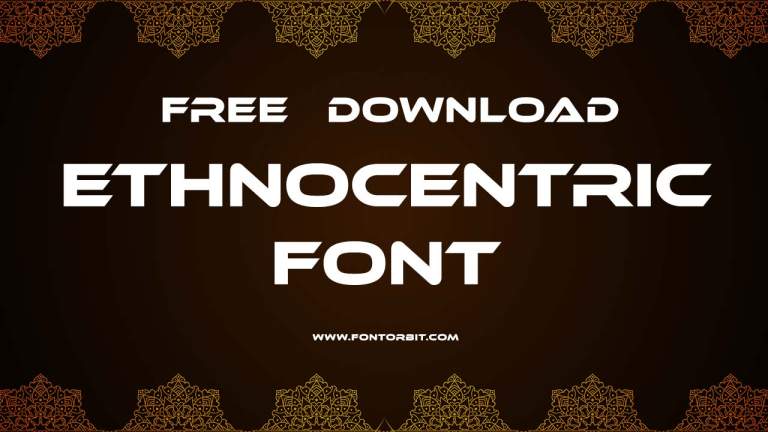

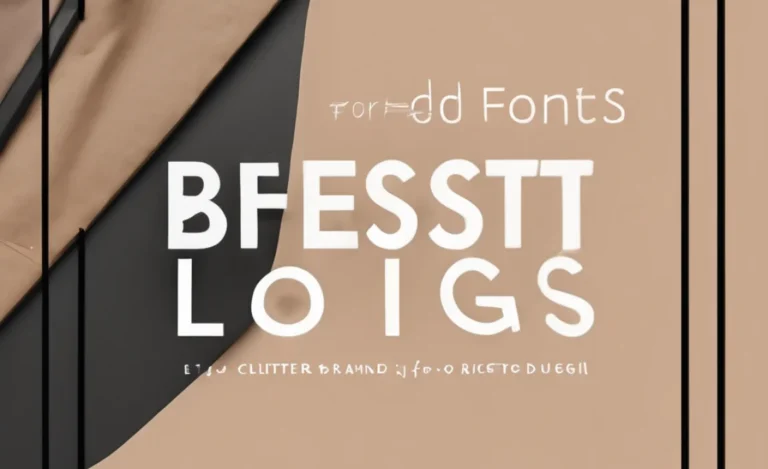
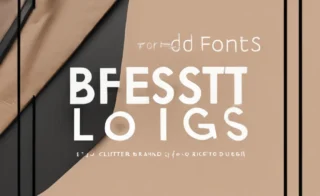

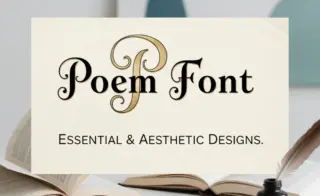
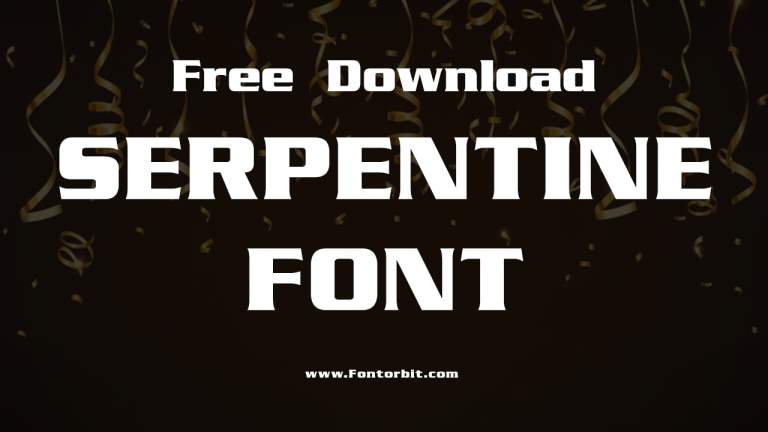
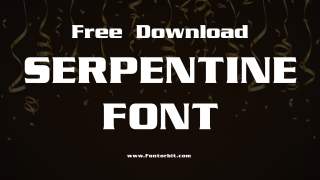
Leave a Comment